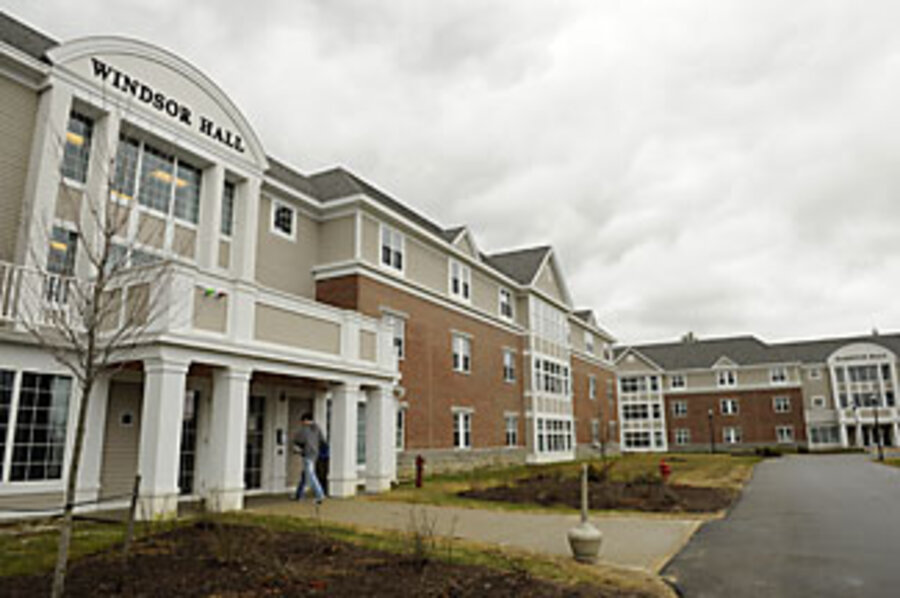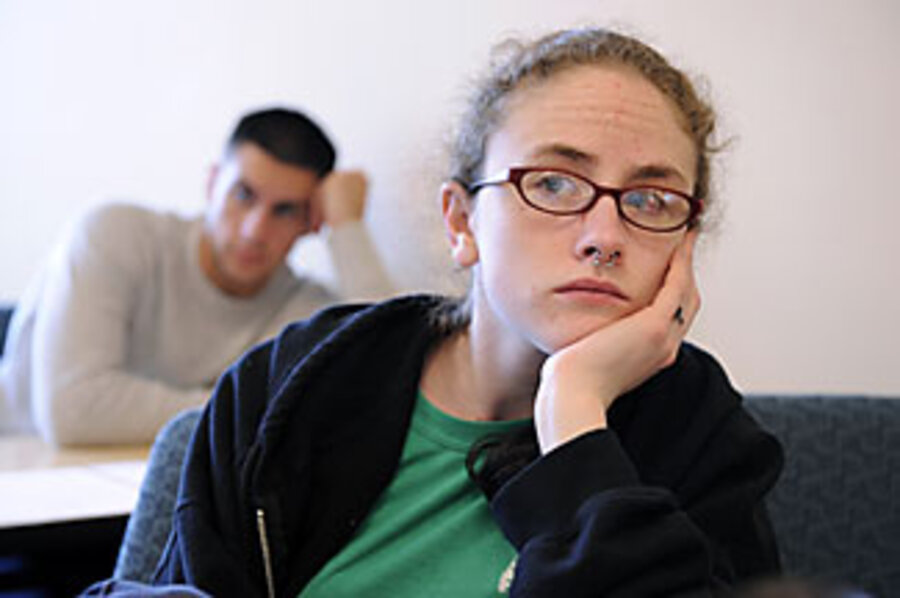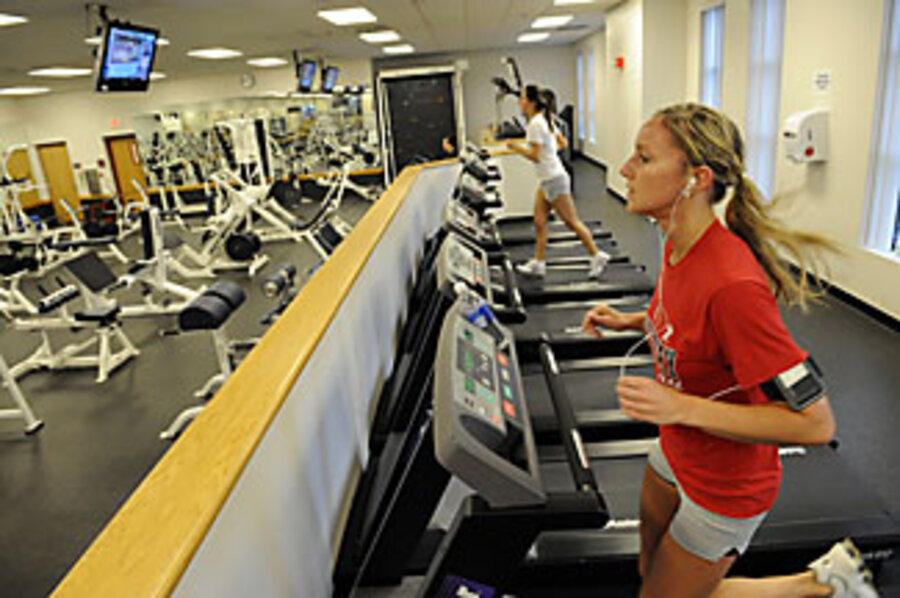Colleges offer no-frills degrees
| Salem, N.H.
Kaileen Crane was hardly interested in the hefty price tag that comes with the traditional college experience. So she's paying $10,000 a year for the Advantage Program offered by Southern New Hampshire University (SNHU), a private college.
Forget about campus housing. Or a meal plan, or a gym with a climbing wall. This program is about the basics – core courses at a bare-bones satellite campus. But the price is less than one-third of what it costs for tuition and room and board at the main campus in Manchester.
"It's close to where I live, it's close to where I work, and the cost is just so much cheaper than a lot of other places," says Ms. Crane during a break from classes in an office building in Salem.
Shopping for value is "in" these days – especially when it comes to big-ticket items like a college education. Public universities and community colleges traditionally have represented low-cost options. But now, some private colleges – and at least one state's public program – are trying to come up with cheaper pathways to a degree.
SNHU president Paul LeBlanc calls the Advantage Program a "low-cost airline equivalent" in higher education – "a high-quality academic experience, but not a whole lot else." Others liken it to an economy car or a meat-and-potatoes meal.
If a substantial number of colleges were to offer no-frills options like SNHU's, "they'd make a huge step in tackling the root causes of the cost problem," says Jane Wellman, executive director of the Delta Cost Project in Washington, which analyzes higher-education spending.
Other schools haven't yet adopted SNHU's model, but it's being watched closely. Meanwhile, a number of private colleges are promoting other affordable options, in addition to boosting financial aid. Neighboring Daniel Webster College in Nashua hopes to attract recent high school graduates who are willing to commute by offering them tuition at nearly half price. Some institutions are creating partnerships with community colleges to smooth the transfer of credits. Others are making it easier to earn a bachelor's degree in three years, saving students 25 percent. And a handful have announced that for students who meet certain criteria, tuition for 2009-10 will equal the cost of nearby public colleges.
"We are entering a period of unmatched innovation," says David Warren, president of the National Association of Independent Colleges and Universities.
The Pennsylvania State Board of Education recently offered ideas for reining in costs, including the possibility of a no-frills public-college alternative. Pennsylvania's public-education price tag is the sixth-highest in the US, according to a state report. And the level of graduates' debt ranked sixth as well, averaging nearly $24,000.
In hearings around the state, college officials told of being caught up in a "facilities race" with nearby campuses. Students who didn't have the desire or time to use campus amenities said they wanted a bare-bones alternative.
"The response has been phenomenal. There's been enormous interest," says state board chairman Joseph Torsella. Although a specific proposal isn't on the table, the dialogue could lead some state institutions to experiment with no-frills programs.
But the idea also has sparked a pushback from those who think frills versus no frills misses a larger point about college costs.
A main factor driving up tuition at public universities is the reduction in state funding. In the Pennsylvania State System of Higher Education, for instance, appropriations per student slid 20 percent in the past decade, says chancellor John Cavanaugh. During the same period, however, the system found ways to save, so tuition went up just 16 percent.
Still, costs at schools in the system are much less than they are at many for-profit colleges (think online universities) that call themselves "no-frills," Mr. Cavanaugh says.
In an urban setting, it might work to offer courses but no housing or student services, Cavanaugh adds. "But most of our institutions are in very rural communities where there isn't sufficient housing ... and there would be very little for students to do." And for traditional-age students, campus life can be important for "the social maturation process, learning how to be an adult, manage time, all these skills that employers talk about as 'soft skills,' " he says.
Just 35 students are enrolled in this first year of SNHU's Advantage Program, aimed at 18- to 22-year-olds. But interest is high, and the program is expected to expand this fall. It has a rolling admissions cycle, and as families digest financial-aid packages offered by various schools this spring, "some have realized college could be out of reach unless they find an inexpensive alternative," says Linda Richelson, director of SNHU's Salem center.
For some, like Crane, the program is appealing not just for its cost, but also because it lacks the distractions of campus life. "So much of [the residential experience] is focused on partying, and I'm not into that," she says.
The students in Salem gather four mornings a week for five hours. That includes classes, meetings with professors and advisers, and a break. Most head off for jobs in the afternoon. The courses and most of the professors are the same as those on the main campus.
"It's a very supportive, 'high touch' environment," says Karen Goodman, director of SNHU's Nashua center. That's one reason the price is still substantially higher than that of a community college.
Students can participate for two years and then walk away with an associate's degree or transfer to the main campus to complete a four-year degree.
With its dedicated classrooms and computer labs, the setting provides some advantages, says Christina Hitchcock, who teaches literature in Salem and Manchester.
"On the main campus, despite the bells and whistles," she says, "classroom space is extraordinarily limited. It's harder to get your kids into a computer lab." But in the Advantage Program, "I can teach students in different ways."







